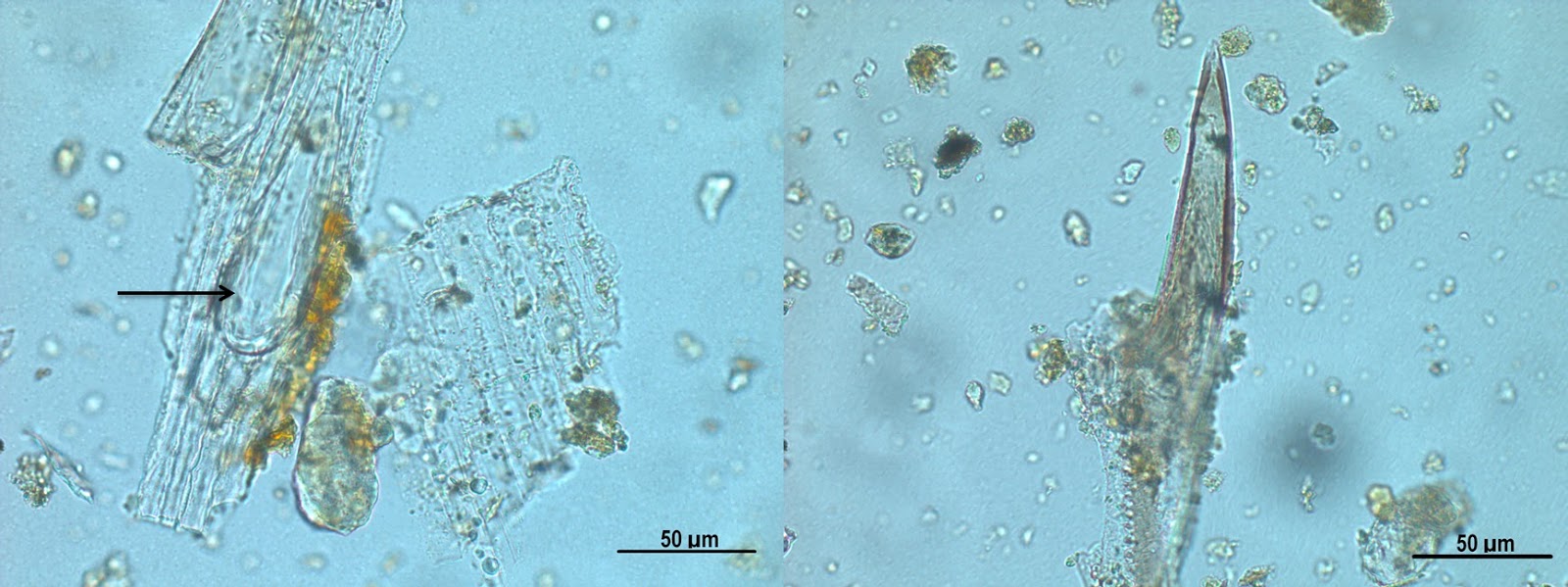Microfossil of the Month: Awn phytoliths
These micrographs show grass awn phytoliths, on the left the spiky hair part is still attached to the rest of the awn, the one on the right shows a hair that has become detached. Awns are hair or bristle type structure which are particularly common on grasses. In some species, such as emmer wheat, the awns contribute to seed dispersal, by hooking into the soil. Changes in humidity cause the awns to expand and contract, acting like a ratchet to propel the seed into the ground. Not to be confused with trichomes, which are another 'hair-like' structure, but a much finer growth of hairs on the surface of the epidermis, and can also produce distinctive phytoliths. Both of these examples are from the same sample, extracted from ashy deposits in an external area at Sheik-e Abad, an early pre-pottery Neolithic site in Iran. The site was excavated as part of the Central Zagros Archaeological Project. I worked there for 2 months after submitting my PhD in 2008, one of the most fascinating sites I have ever worked on. I hope I will get to go back there one day.


Comments
Post a Comment